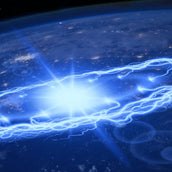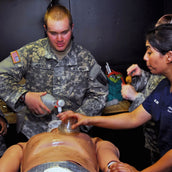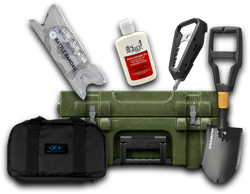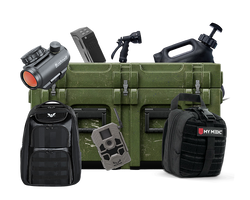
No Water? Alternative ways to stay hydrated in disaster scenarios.
Water is essential for our body in so many ways. It maintains the temperature in our body and keeps the joints lubricated, supplies oxygen with blood in the whole body, and removes toxins. However, you don't find an ample water supply in a disaster scenario. Meanwhile, you cannot compromise on your hydration.
Top 10 ways to stay hydrated in disaster situations.
Here are the top 10 ways to stay hydrated in disaster scenarios.
1. Reduce your exposure and cover-up.
Staying hydrated does not only mean that you increase your water intake. It also means that you must stop losing water due to excessive heat in the environment. When you are in a disastrous situation during the day, dehydration can occur within a few hours.
To prevent this from happening, the best you can do is to stay in cool places with the least exposure to the sun. You need to stay in a controlled environment. Also, cover yourself with clothes, so sweating and evaporation of water from your body is not as fast.
2. Utilize your water only when your body needs it.
One of the biggest mistakes people make when trying to stay hydrated is they drink water as soon as they feel thirsty. It puts excessive water in the body and exits as sweat or urine. See when your body needs water by checking the color of your urine.
- Light yellow, like lemonade, means you don't need water now.
- Pale yellow means that you can drink water now.
- Dark yellow or orange shows that you are dehydrated and must drink water immediately.
3. Change your diet to stay hydrated for a long.
We can live without food for much longer than without water. When you are dehydrated, eating excessive food will not help out because digestion and excreting food take up a lot of water.
So, instead of helping you out, it will make things further problematic. If you don't get water after eating food, you may feel pain in the stomach due to constipation. Your primary focus under these conditions must be on the water rather than food.
4. Always keep an eye out for clean water sources.
When you are in disastrous situations, you must keep an eye out for clean water sources. These include:
- Lakes
- Fresh water stream
- Creek
- Waterfall
You need a map of this situation and look for blue marks as they tell about water sources. One efficient way to find water is by looking for animal trails, as they often use the same path when drinking water.
5. Steal some water from plants and value every drop.
If you know much about plants, you can know which ones to take water from. The basic way to steal water from plants is by cutting their trunk so deep that water starts coming out. Next, you must tie a container to capture all the water that seeps out.
From under a few minutes to hours, your container will be full. On a beach, you may opt for the alternative method of looking for coconuts that still have water inside.
6. Take calculated risks when drinking dirty water.
Sometimes you don't find any clean water sources, and the only water you find is not drinkable. The worst part is that you cannot clean or purify that water. Such water can cause health issues, and so can dehydration.
While you may be due to dehydration, drinking dirty water may keep you up for some time, and you may get medical attention. So, according to your situation, take calculated risks if you don't find clean water.
7. Use water for cooling advantage even if you cannot drink it.
Being surrounded by sea is a disastrous situation where you have unlimited water around you, but none of that is drinkable. Remember that you can stay hydrated for longer if you prevent dehydration from heat. So, you can use that salty water to cool the place. Soak your clothes, wet the sand, and even wet the shelter you live in, and it will show the dehydration rate.
8. Carry as much water as you can and refill when you can.
Although you cannot carry huge water containers under such circumstances, you can still carry some refillable containers. The key to survival here is carrying as much water as possible. So, whenever you find some source of clean drinkable water, you can refill your bottles, which will help you stay hydrated until you find your next water source.
9. Never ignore your hydration requirements if you don’t feel thirsty due to cold weather.
Dehydration is bad in hot weather because you sweat a lot and the environment is warm. However, it worsens in cold weather conditions because you don't know if you are dehydrated because the thirst sensation is not that strong in cold weather.
So, the solution is to keep track of your body's water requirements by keeping track of the color of your urine. This way, you know when you need water before something critical happens.
10. Carry a portable filter if you can.
One of the best things you can carry is a portable filter for disaster scenarios. These filters are pocket friendly, and they allow you to drink water from multiple types of sources. So, depending on your good filter, you can try drinking water from lakes, streams, etc., without worrying about anything.
Such products make drinking water from natural resources hassle and stress-free when you don't have ample clean water around you. As these are ready to use, you don't need any special preparations.
Final Remarks:
Water is vital for human life, and if you don't drink enough water, your body will start becoming inefficient in multiple functionalities. So, even if some disastrous situation strikes you, there must be no compromises on your hydration. If you find yourself with lack of enough supply of water, you can use the above 10 ways to stay hydrated.
Image by PublicDomainPictures from Pixabay
Share this article








